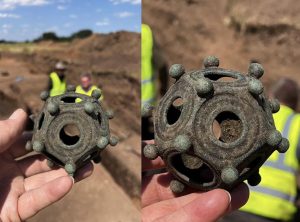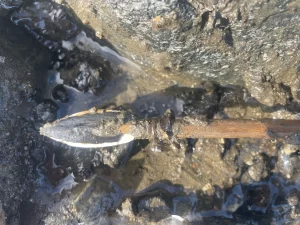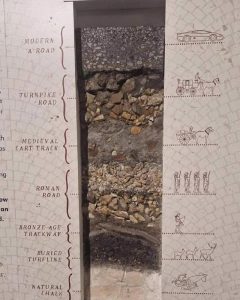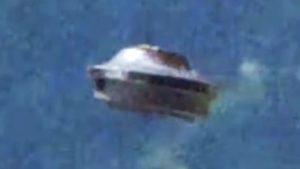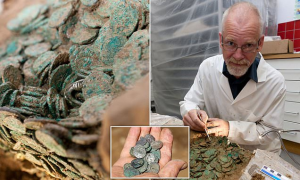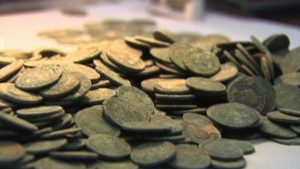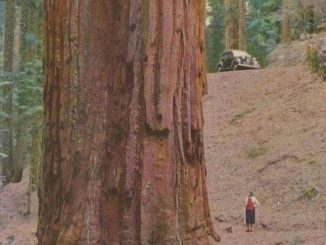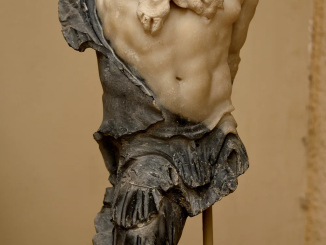
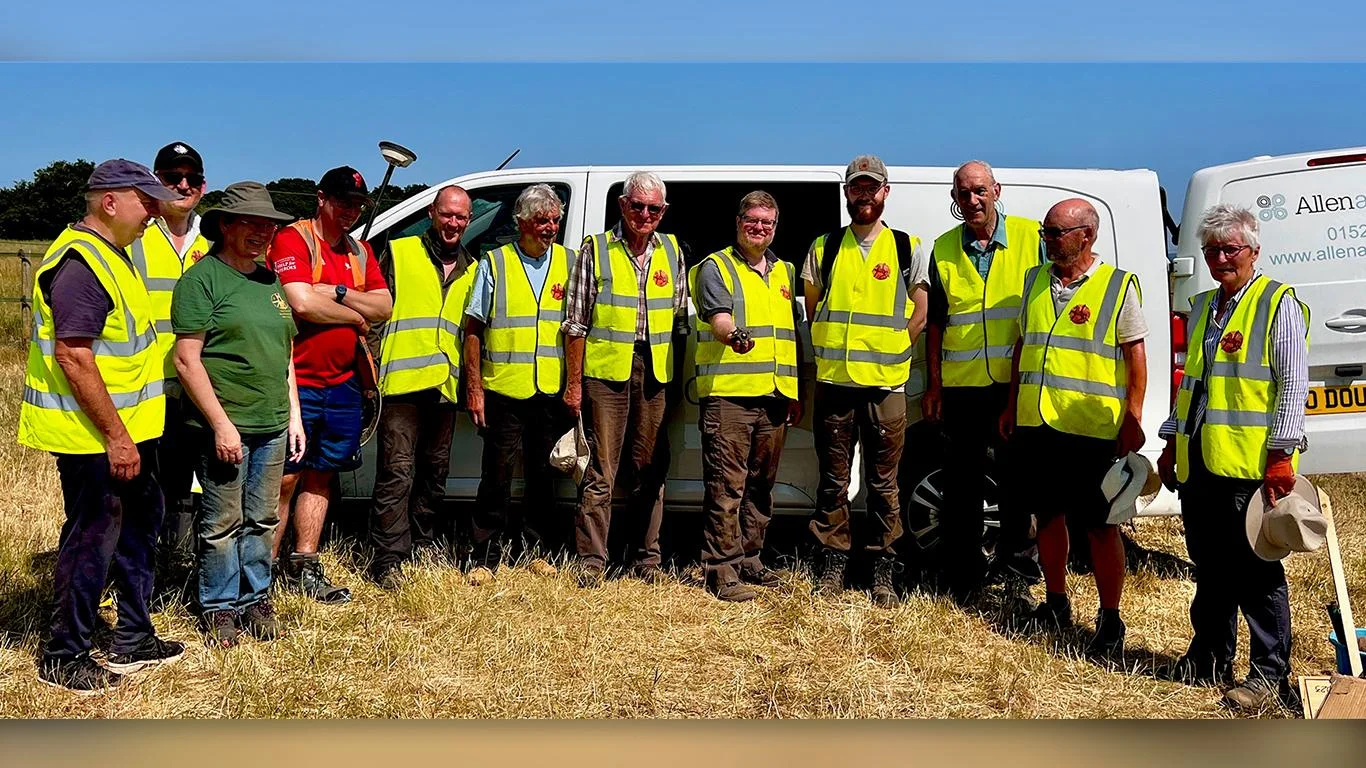
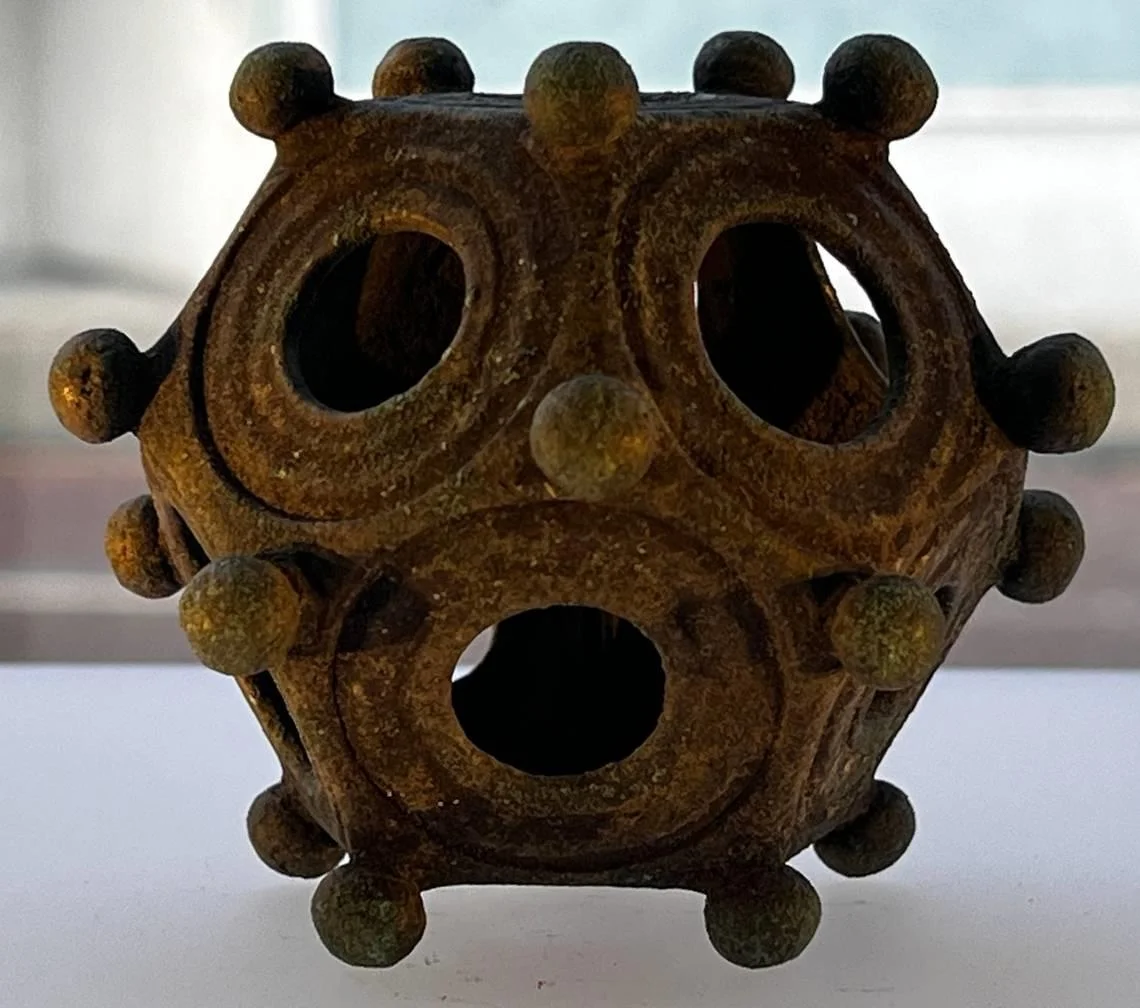

Amateur archaeologists from the Norton Disney History and Archaeology Group in England have unearthed a perfectly preserved Roman dodecahedron, reigniting the mystery surrounding these 12-sided metal objects that have puzzled experts for centuries. This dodecahedron was discovered in a farmer’s field near the Lincolnshire village of Norton Disney.
Enigmatic Roman dodecahedron uncovered by amateur archaeologists in Norton Disney, England
The object, called a “Roman dodecahedron,” was discovered in a farmer’s field near the Lincolnshire village of Norton Disney. Credit: Norton Disney History and Archaeology Group
The Norton Disney excavation, which began in June of last year, initially yielded typical Roman-era discoveries such as pottery, animal bones, and small metal artifacts. However, the project took an unexpected turn on the second-to-last day when the volunteers uncovered a pristine Roman dodecahedron, roughly the size of a grapefruit.
Richard Parker, secretary of the Norton Disney History and Archaeology Group said: “We were completely surprised by it. We weren’t getting many metal signals at that point, but all of a sudden there it was.”
This Roman dodecahedron is the 33rd of its kind found in Britain, but notably, it is the first discovered in the Midlands region. The object, made of copper alloy, measures about 3 inches tall and 3.4 inches wide, weighing approximately half a pound. Unlike many other dodecahedrons previously found, this one is entirely intact, lacking any damage or fragmentation.
Enigmatic Roman dodecahedron uncovered by amateur archaeologists in Norton Disney, England
The object was found by an archaeological group of local volunteers in England. Credit: Norton Disney History and Archaeology Group
The purpose of these objects has long eluded researchers, as they bear no inscriptions or descriptions in Roman writings. Theories about their function have ranged from toys, dice, and maces to sling stones, range-finding devices for Roman artillery, and even knitting patterns for Roman gloves. However, the intricate design and lack of wear patterns on the objects discount many of these theories.
To gain further insights, the Norton Disney History and Archaeology Group consulted with experts, leading to the conclusion that the dodecahedron likely served as a religious or ritual object in Roman times. The artifact’s peculiar composition—75% copper, 7% tin, and 18% lead—raises questions about its practicality, as an excess of lead would make it brittle and impractical for certain uses.
While over 100 dodecahedrons have been found in northwestern Europe over the past two centuries, this discovery is significant due to its archaeological context. Most dodecahedrons were unearthed by metal detectorists in isolation, making the Norton Disney find a rare occurrence of the object being found in its original setting.
Enigmatic Roman dodecahedron uncovered by amateur archaeologists in Norton Disney, England
The Norton Disney site, rich in Roman history, has previously yielded Iron Age artifacts predating Roman rule, hundreds of pieces of Roman pottery from the second and third centuries CE, and the remains of a Roman villa. The region came under Roman rule in 43 CE, and Roman influence persisted until around 410 CE.
The Norton Disney History and Archaeology Group plans to return to the site in the summer of 2024 for further excavation, aiming to uncover more about the circumstances of the dodecahedron’s placement and, hopefully, gather clues about its purpose and use. The group speculates a potential link between the object and local religious practices, considering the superstitions prevalent in Roman society.
